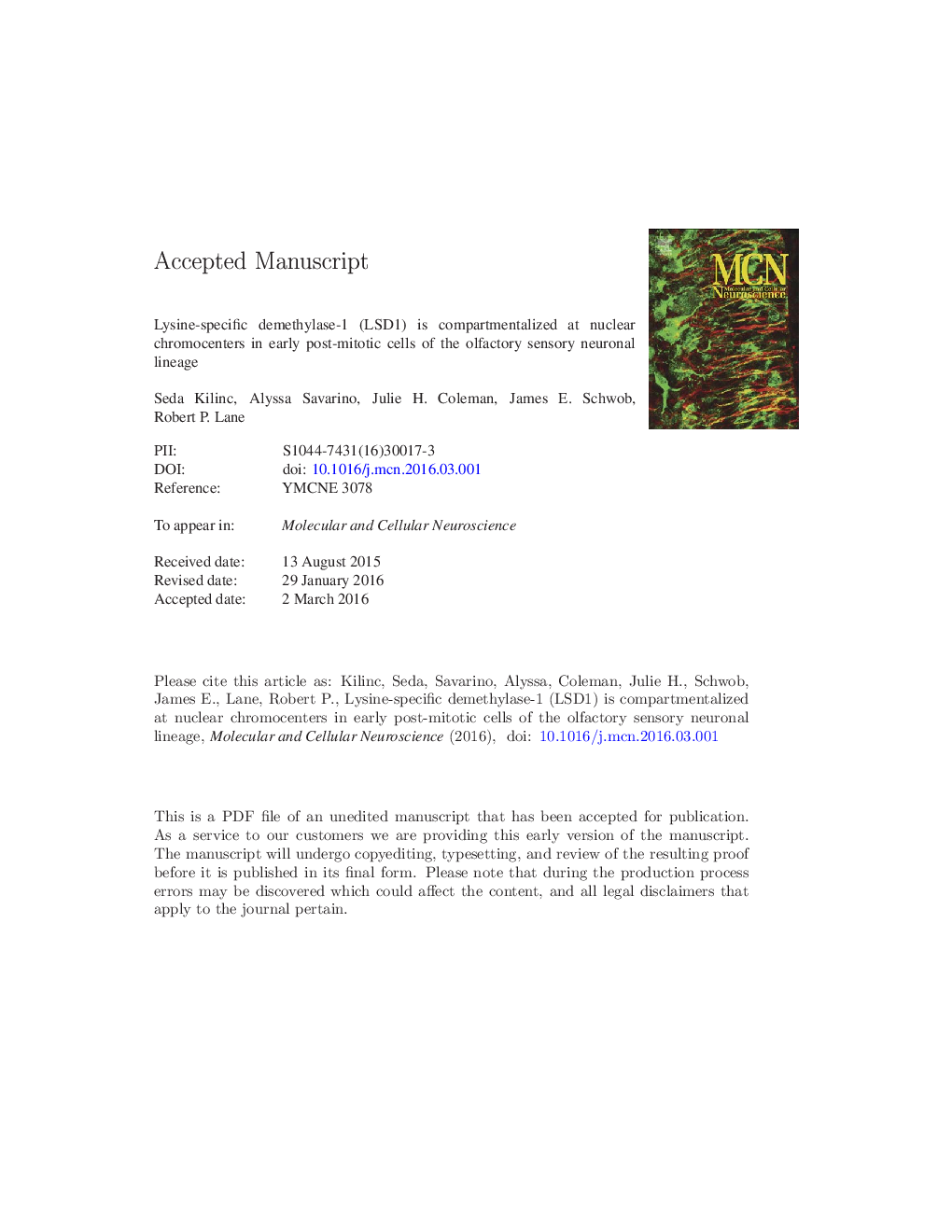| Article ID | Journal | Published Year | Pages | File Type |
|---|---|---|---|---|
| 8478476 | Molecular and Cellular Neuroscience | 2016 | 44 Pages |
Abstract
Mammalian olfaction depends on the development of specialized olfactory sensory neurons (OSNs) that each express one odorant receptor (OR) protein from a large family of OR genes encoded in the genome. The lysine-specific demethylase-1 (LSD1) protein removes activating H3K4 or silencing H3K9 methylation marks at gene promoters and is required for proper OR regulation. We show that LSD1 protein exhibits variable organization within nuclei of developing OSNs, and tends to consolidate into a single dominant compartment at the edges of chromocenters within nuclei of early post-mitotic cells of the mouse olfactory epithelium (MOE). Using an immortalized cell line derived from developing olfactory placode, we show that consolidation of LSD1 appears to be cell-cycle regulated, with a peak occurrence in early G1. LSD1 co-compartmentalizes with CoREST, a protein known to collaborate with LSD1 to carry out a variety of chromatin-modifying functions. We show that LSD1 compartments co-localize with 1-3 OR loci at the exclusion of most OR genes, and commonly associate with Lhx2, a transcription factor involved in OR regulation. Together, our data suggests that LSD1 is sequestered into a distinct nuclear space that might restrict a histone-modifying function to a narrow developmental time window and/or range of OR gene targets.
Related Topics
Life Sciences
Biochemistry, Genetics and Molecular Biology
Cell Biology
Authors
Seda Kilinc, Alyssa Savarino, Julie H. Coleman, James E. Schwob, Robert P. Lane,
